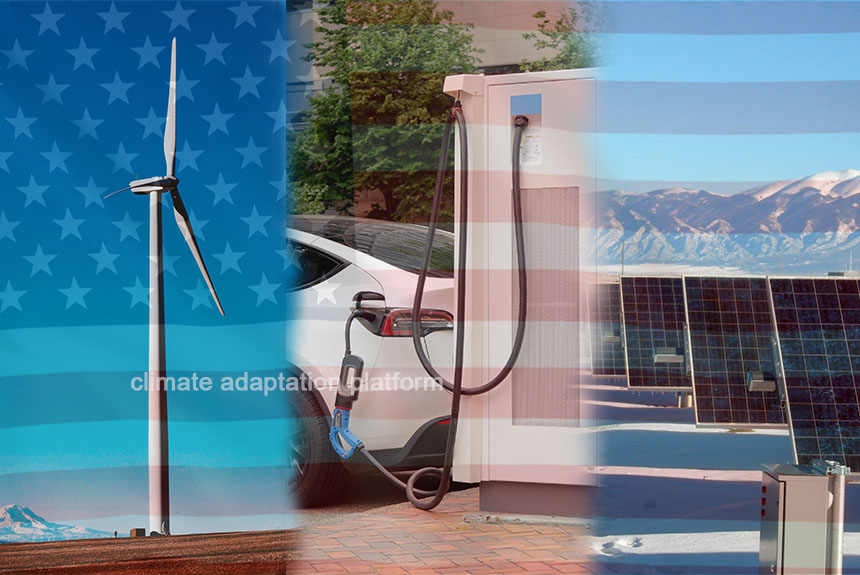Around the world, record-breaking temperatures are happening more frequently.
Wildfires are getting more intense, and their impacts are getting more catastrophic. The wildfires in Lahaina, Maui, which started on 8 August, have killed 114 people as responders are still looking for at least thousands of missing people. In Canada, the BBC reports that about 30,000 households have been ordered to evacuate in British Columbia provinces – areas where nearly 400 wildfires are raging.
According to the Canadian Interagency Forest Fire Center, over 1,000 active wildfires are nationwide, and two-thirds or around 650 are considered out of control.
As the planet continues to warm, studies warn it will increase the severity and frequency of wildfires. Governments worldwide are pouring trillions of dollars into clean energy to stop further warming of the planet caused by burning fossil fuels.
The article in the New York Times narrates how the United States, a country renowned for its gas, coal, and oil to build the world’s largest economy, is now rapidly transitioning from fossil fuels and investing heavily in clean energy.
From Tulsa, Oklahoma, Tulsa, a town dubbed the “Oil Capital of the World”, to Houston, Texas, and Arkansas, these Republican States are now embracing clean energy.
Tulsa is investing in electric school buses, a billion-dollar panel factory, and a battery factory, and residents are starting to drive Teslas and Ford F-150 Lightnings around town. Houston has more than 130 solar and wind-related companies, and Arkansas is planning to build a solar farm to power a U.S. steel factory.
The article notes that about two-thirds of new investments in clean energy are happening in Republican-controlled states, where their policymakers have historically pushed back on renewables. As Americans see the economic and environmental benefits of shifting to clean energy, the tide is slowly turning.
A trio of laws signed under President Biden’s administration: The $1 trillion Infrastructure, Investment and Jobs Act, also known as the bipartisan infrastructure law, the bipartisan CHIPS and Science Act, and the Inflation Reduction Act have much to do in spurring clean energy investment and driving significant climate action in the country.
The Infrastructure, Investment and Jobs Act and Inflation Reduction Act are complementary laws that advance climate investments in the country. The Inflation Reduction Act provides $369 billion in tax credits for clean energy and electric vehicles, boosting energy efficiency, establishing a national climate bank, supporting climate-smart agriculture and production of sustainable aviation fuel, reducing air pollution at ports, and much more (Bertrand, 2022).
The three combined laws have encouraged companies to invest billions in manufacturing investments, and these investments in clean energy have also created thousands of jobs in the country and ushered in the growth and speedy uptake of electric cars, including heavy vehicles.
Concrete examples of the clean energy developments happening in the U.S. noted in the article are as follows: Electric vehicles had a record sale of 300,000 in the second quarter of 2023, a 48% increase from the year prior.
The Postal Service plans to spend nearly $10 billion to purchase 66,000 electric mail trucks, roughly 30% of its fleet, in the next five years. Amazon has ordered 100,000 electric delivery trucks from Rivian, an American electric vehicle manufacturer.
General Motors, having the largest market share of any carmaker in the United States, has committed to selling only zero-emissions vehicles by 2035.
“Clean energy is moving faster than many people think, and it’s become turbocharged lately,” says International Energy Agency executive director Fatih Birol. The agency expects an investment of more than $1.7 trillion in technologies such as wind, solar power, electric vehicles and batteries globally this year (Gelles et al., 2023).
Source:
Lukiv, J. & Walsh, A. (2023, August 21). Canada wildfires: At least 30,000 households in British Columbia told to evacuate. BBC. Retrieved from https://www.bbc.com/news/world-us-canada-66562610
Bertrand, S. (2022, September 12). How the Inflation Reduction Act and Bipartisan Infrastructure Law Work Together to Advance Climate Action. Environmental and Energy Study Institute. Retrieved from https://www.eesi.org/articles/view/how-the-inflation-reduction-act-and-bipartisan-infrastructure-law-work-together-to-advance-climate-action
Gelles, D., Plumer, B., Tankersley, J., & Ewing, J. (2023, August 18). The Clean Energy Future Is Arriving Faster Than You Think. The New York Times. Retrieved from https://www.nytimes.com/interactive/2023/08/12/climate/clean-energy-us-fossil-fuels.html
Bertrand, S. and Willians, B. (2022, February 1). Issue Brief | Climate Change Mitigation and Adaptation at U.S. Ports. EESI. Retrieved from https://www.eesi.org/papers/view/issue-brief-climate-change-mitigation-and-adaptation-at-u.s-ports-2022
Tolbert, J. (2021, October 22). Beyond Cities: Breaking Through Barriers to Rural Electric Vehicle Adoption. EESI. Retrieved from https://www.eesi.org/articles/view/beyond-cities-breaking-through-barriers-to-rural-electric-vehicle-adoption
Environmental and Energy Study Institute. (2022, February 24). Briefing Series | Agencies in Action: Federal Programs That Deliver Climate Mitigation and Adaptation Benefits Every Day. EESI. Retrieved from https://www.eesi.org/briefings/view/022422fed
Environmental and Energy Study Institute. (n.d.) Agriculture and Climate Series. EESI. Retrieved from https://www.eesi.org/agriculture-and-climate-series
Environmental and Energy Study Institute. (n.d.) Sustainable Aviation Fuels – A Critical Emissions Mitigation Strategy Gaining Momentum. EESI. Retrieved from https://www.eesi.org/sustainable-aviation-fuels-a-critical-emissions-mitigation-strategy-gaining-momentum



Leave a Reply